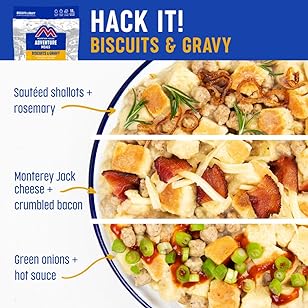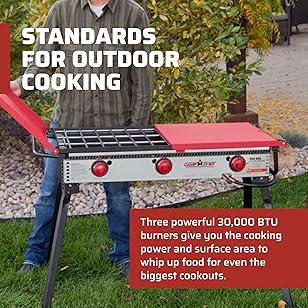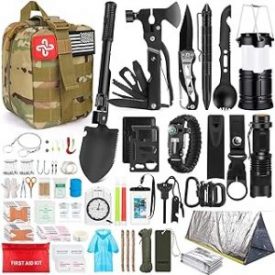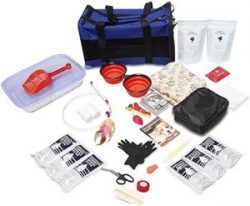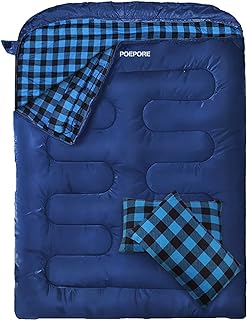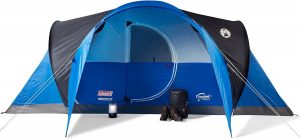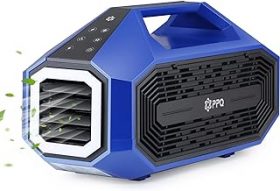Putting Together A Home Earthquake Kit
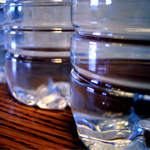 If you live in an area prone to seismic activity, it’s vitally important that you have an earthquake kit in your house or in your car so that you’ll have emergency supplies when you need them. Even if you don’t live in an area that is prone to earthquakes, you might want to create a basic disaster survival kit to be used in case of nor’easter, tornado or other types of natural disasters.
If you live in an area prone to seismic activity, it’s vitally important that you have an earthquake kit in your house or in your car so that you’ll have emergency supplies when you need them. Even if you don’t live in an area that is prone to earthquakes, you might want to create a basic disaster survival kit to be used in case of nor’easter, tornado or other types of natural disasters.
Ideally, your earthquake kit should contain enough supplies for you and your family to survive for a period of up to three days. Beyond the basic considerations of food and water that are physically necessary for survival, you will also need a few additional items to help you make it through the aftermath of an earthquake.
One of the first things that you’ll need is some sort of light source in case the electricity has been knocked out in your area. Since you’re going to want to make sure that your light will work when needed, your best bet is to choose an LED flashlight or lantern since they have a drastically reduced energy usage and will keep a charge longer in storage than most standard flashlights.
Test any LED flashlight that you have every few months to make sure that it still works, and if you’re using an LED lantern that has multiple lighting modes then you should take the time to test every one of its modes.
Another essential piece of equipment is a multi-purpose tool that has knife blades, pliers, screwdrivers, and even saw blades and can openers in it. Be sure to store your multi-purpose tool with your LED lantern or LED flashlights so that you can find it quickly once you’ve located your light source. You’d be amazed at how useful a multi-purpose tool can be after an earthquake, and you may even find uses for it that you’ve never considered.
Also in your earthquake kit should be a fully-stocked first aid kit so that you can treat any injuries that might have occurred during the earthquake. Make sure that you have common items such as blankets, toilet paper, and hand sanitizer with your first aid kit so that you can cover basic needs and provide warmth and sanitation for anyone who is suffering from shock as well.
Other useful things to include in your earthquake kit include enough money or traveler’s checks to be able to meet any monetary needs that you might have in case the banks are closed due to the earthquake. You should also have a safe with copies of any important documents that you don’t want to be lost or damaged in an earthquake, as well as clean clothes for both warm and cold weather so that you and your family won’t be forced to wear the same clothes for several days in a row.
Make sure that you check the expiration dates on any food or medicine that you keep in your earthquake kit, and change out any stored water that you have every few months. This will prevent you or your family members from getting sick due to expired food or stale water.
Preparing an earthquake kit is an important activity that should be done as a family to ensure that everyone knows how to use the items inside and where to find it if an earthquake occurs. Being prepared for a disaster may very well save a person’s life.
What To Do During The Quake?
When you feel that the surrounding is rattling and the house is shaking in unusually, you know that something is wrong underneath the earth’s surface. Quakes or earthquakes are without a doubt one of the most dreaded natural disasters. In fact, it’s even worse than typhoons or hurricanes. Although seismographs can detect the slightest changes in the movement of the earth, it cannot however allow people to migrate or evacuate when worse quakes suddenly occur. Unlike typhoons, for which weather predictions can warn people of incoming atmospheric disturbances, people can not hide from earthquakes.
This is why earthquake survival is a very crucial aspect in attaining survival skills. When you are inside a building, in your house, school or hospital there are specific areas in these places that you can run and be safe. However there are also places that are not safe to stay during an earthquake. So here are earthquake survival tips that you need to remember.
In places where earthquakes are prone, make sure to stay tuned with the local news on TV or radio regarding weather. As part of earthquake survival you should know the earthquake season of your area. Scientists and geologists often make reports and prediction on when an earthquake will likely occur. So be informed. Always be alert and be cautious to sensations and sounds related to earthquakes. Strange behavior of animals, howling of dogs, birds unusual flocking and snakes of earth dwelling animals emerging are just some of the tell tale signs of odd earth movement.
If you had been through an emergency preparedness training before, you may be familiar with the drop – cover – roll method of surviving earthquakes. If not, the method is actually very simple, using your body, drop to floor cover your face and chest with your arms and roll in safe places such as underneath a strong table. An earthquake survival method like this is comparable to the stop – drop – roll method you will apply during fire emergencies or smoke incidents. The purpose of rolling on the floor is to keep away from smoke or fumes that might be a result of gas leaks or fire. Smoke does not settle at the bottom of a space, so in order to stay away from harmful fumes, stay on the floor.
Stay under the door frame since this is the safest and stable part of the house. Another safe place to stay in the house is under floor or roof beams. Finally, a good earthquake survival tip is to always stay collected, cool and calm during quakes.
There is always the possibility your housing will become unsafe. Having minimal camping equipment, survival blankets, sleeping bags and a family popup tent can provide a place to stay while protecting your possessions.
_


 October 8, 2015
October 8, 2015 
